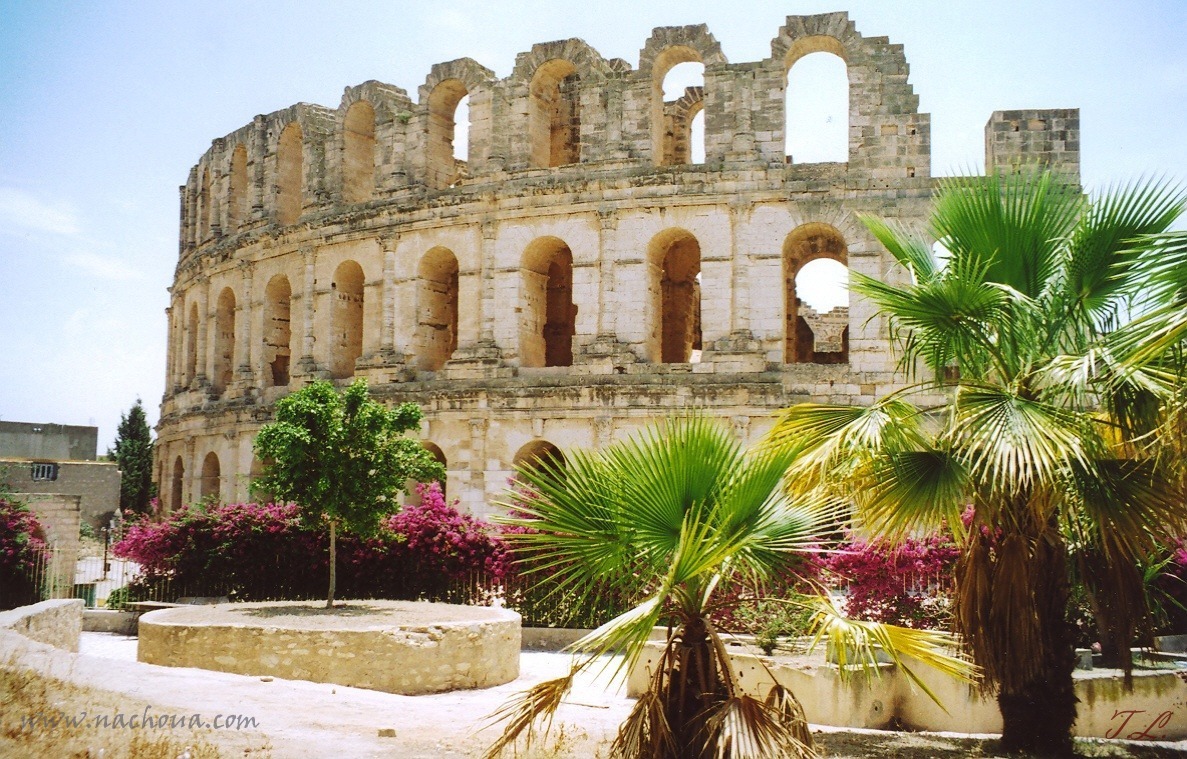
Often called "Africa’s Roman Colosseum," El Jem is one of the best-preserved Roman amphitheaters in the world, rivaling even the Colosseum of Rome in scale, architecture, and historical significance.
Built around 238 AD, during the reign of Emperor Gordian III, the El Jem Amphitheater reflects the wealth and importance of Thysdrus, the Roman city that once stood there. At its peak, Thysdrus was a booming center for olive oil production, rivaling cities in Italy and Gaul.
The amphitheater was designed to hold up to 35,000 spectators, an astonishing number considering the modest size of the surrounding town. Its construction out of massive stone blocks — without the use of mortar — shows the skill and ambition of Roman engineers.
Like its counterpart in Rome, El Jem was a place of entertainment and politics. Gladiator fights, wild animal hunts (venationes), and public spectacles thrilled the citizens and demonstrated the reach of Roman authority in Africa. The amphitheater was also a venue where emperors and local elites could reinforce their status and curry favor with the masses.
Beneath the arena, visitors can still see the underground chambers that once held wild animals and gladiators, awaiting their turn to face the crowd’s judgment above.
Following the fall of the Roman Empire, the amphitheater suffered gradual decline. In the Middle Ages, it served as a fortress, a refuge during rebellions, and even a quarry for building materials. In the 17th century, parts of the structure were destroyed by Ottoman forces to suppress local resistance.
Yet much of the amphitheater survived — remarkably intact — and was recognized as a UNESCO World Heritage Site in 1979.
El Jem’s cinematic grandeur has not gone unnoticed. Its vast arches and sun-bleached stones have appeared in films and documentaries, including Monty Python’s Life of Brian and historical features about Rome. It is also home to the International Festival of Symphonic Music, where classical music echoes through its ancient stone walls every summer.
Getting there: El Jem is easily reachable by train or car from Tunis, Sfax, or Sousse.
What to see: Explore the arena floor, the underground chambers, and climb to the upper tiers for panoramic views.
Museum nearby: The El Jem Archaeological Museum offers beautiful Roman mosaics and artifacts recovered from local sites.
The El Jem Amphitheater is not merely a relic of ancient times — it is a living monument to human ingenuity, ambition, and the enduring influence of Roman culture in North Africa. As the sun sets behind its towering arches, one cannot help but imagine the roar of the crowd, the clash of swords, and the drama that once unfolded beneath the North African sky.
In El Jem, history doesn’t just live — it echoes.